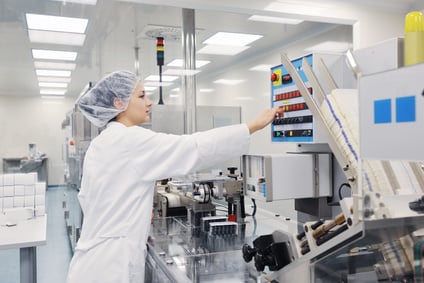This post was authored by Ned Espy, technical director at Beamex.
Process instrument commissioning is an essential part of an overall plant’s commissioning program and is necessary for ideal plant performance. It requires an allocated budget, time, and trained personnel, and must be considered within the scope of the overall program.  Typically the most common activities that affect time and cost in a conventional process instrument commissioning program are:
Typically the most common activities that affect time and cost in a conventional process instrument commissioning program are:
- Learning and familiarizing of field devices
- Physically installing the field device
- Connecting to and identifying the field device
- Configuring the required parameters and testing the configuration and interface to other systems.
With all of these activities, it is obvious that detailed planning is necessary to complete the process. A schedule must be established with benchmarks and monitoring activities in order to keep track of progress. This post will focus on tracking the rate of process instrument commissioning, which is possible to measure (e.g. number of loops or sequence of steps tested per day). For example, a new chemical facility may have a project with 150 loops to check out for a total of 375 instruments (2.5 instruments per loop, on average). Using a conventional calibration work method, testing/checkout is 30 minutes per instrument and there is an additional 30 minutes per loop of checkout required, the total estimate man-hours would be 263.
This equates to one person working 10 hour days, non-stop for nearly a month. Let’s assume that this process was appropriately planned for and the correct amount of time, money and man hours were allocated to the project. That is a hefty budget. Now imagine they were using highly automated and paperless work methods. For example, during commissioning, instrument details are readily available from the design engineer.
Typically, smart instrumentation is used and smart calibrators can obtain set-up details via HART/FF/PA. By combining this data with system features, instrumentation can be easily checked out prior to start-up and all testing documented in electronic format. Having the field commissioning team organized with test tools that lead them through detailed testing is a tremendous benefit.
When power is finally provided to loops, there will be far less issues and less troubleshooting will be required. If there is an issue, test history is readily available for much quicker analysis and solution resolution. Recently, an experienced I&C Engineer told me he estimated the savings in troubleshooting and gain in loop check efficiency saved him “on the order of several man-weeks.”
Eliminating as many of the “moving parts” involved in this critical activity as possible directly correlates to lower cycle time for loop checks. Using a workflow that replaces paper-based records with electronic records reduces the man-hour requirements inherent with handling paper, both in planning and particularly when a contracted technician is in the field also having to manage the equipment required to accomplish the task.
Ideally, the equipment required for loop checks and instrument configuration is also providing the technician electronic data when needed and documenting the results. Elimination of hardcopy records also mitigates the risk associated with human error. This risk, if realized, has potential to become extremely costly indeed. All in all, automating the calibration process during commissioning can save time, lower risk and reduce costs.
About the Author
Ned Espy has been promoting calibration management with Beamex for more than 20 years. He has directed field experience in instrumentation measurement application for over 27 years. Today, Ned provides technical & application support to Beamex clients and partners throughout North America.



